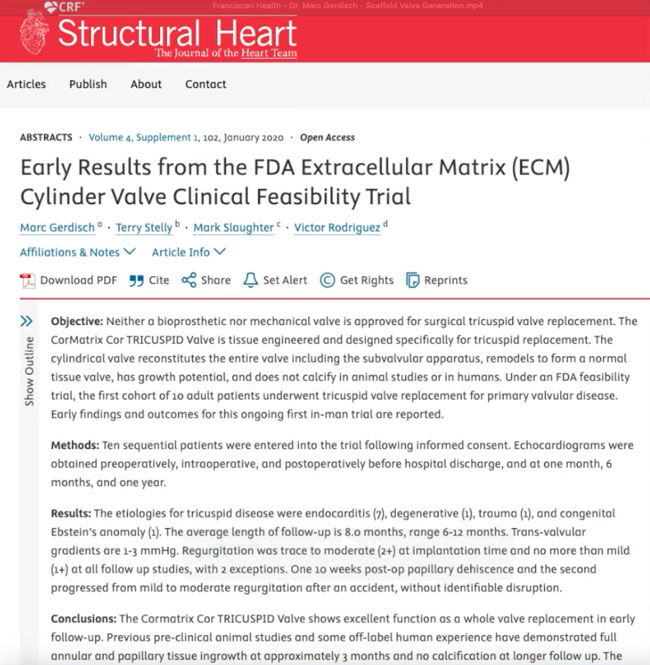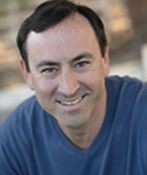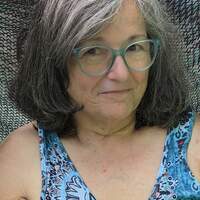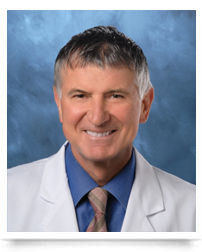Cardiac Innovation: Growing Heart Valves from Scaffolds
Written By: Allison DeMajistre, BSN, RN, CCRN
Medical Expert: Marc Gerdisch, MD, Chief of Cardiac Surgery, Franciscan Health, Indianapolis, Indiana
Reviewed By: Adam Pick, Patient Advocate, Author & Website Founder
Published: April 15, 2025
Over the past 60 years, the one-size-fits-all approach of open heart surgery with a mechanical valve has greatly evolved thanks to transformational advances in tissue valve engineering and therapeutic techniques including minimally invasive and transcatheter procedures. The most exciting part of science and medicine is that experts constantly explore new and better ways to improve outcomes, survivability and patient lives.
We received a patient question from Zoe about one significant advance in cardiac innovation: using a patient’s own cells to grow a new valve. Zoe asked, “What can you tell me about the new research in England, led by Dr. Magdi Yacoub, in which patients are getting temporary valves made of scaffolds that dissolve as the valves grow into their own tissue?”
All the way back in 2009, I spoke with Dr. Marc Gerdisch, the Chief of Cardiac Surgery at Franciscan Health in Indianapolis, Indiana, when this research was in the beginning phases. Luckily, I was able to catch up with Dr. Gerdisch, who has successfully treated over 100 patients in our community, at the Society of Thoracic Surgeons Conference to answer Zoe’s question and get an update on this innovative approach to heart valve replacement.
Key Learnings About Growing New Valve Replacements Using Scaffolds
Here are key insights shared by Dr. Gerdisch:
- Is building a tissue valve with scaffolds possible? “This is really cool stuff and a little bit ‘Sci-fi,’ said Dr. Gerdisch. “We have a clinical trial that we’re completing right now with the FDA in a regenerative valve or a generative valve. The concept is that tissue is made of two things. It’s made of cells and extracellular matrix, which is a scaffold of your tissue.” Dr. Gerdisch said a good way to think of it is that the extracellular matrix is like the girders of a building, where they are the plumbing and electricity, and the cells are the apartments of the building. (Click here to early results from the extracellular matrix clinical trial.)
- How does it work? The scaffold is implanted and acts like a tissue valve replacement. Then, over time, the scaffold is inhabited with the patient’s own cells. Dr. Gerdisch stated, “So fundamentally, what we’re doing, which is similar to what they are doing, is that we implant the scaffold which can function as a valve, which is fine for a while. Meanwhile, the patient’s stem cells inhabit the scaffold, replace it over time, and build new tissue.”
- Dr. Yacoub has helped pioneer the technology. “Dr. Yacoub has been at the forefront of this forever,” Dr. Gerdisch explained. “He is a brilliant surgeon and considered one of the foremost heart surgeons on the planet. He has probably done more surgery than any other surgeon, but now he spends his time working on this technology.”
- The new regenerative valve technology is on the horizon Dr. Gerdisch hopes this innovation will work and he anticipates more data about the safety and the efficacy of extracellular matrix thanks to ongoing clinical. “We hope we’ll make it through the entire FDA trial with our device, which we’re using in the tricuspid position, but the regenerative process is clearly on the horizon.”
Many Thanks Dr. Gerdisch and Franciscan Health!
On behalf of Zoe and all the patients in our community, many thanks to Dr. Marc Gerdisch for sharing his clinical experiences and research with us. We would also like to thank the entire Franciscan Health team for taking such great care of heart valve patients.
Related links:
- Top 5 Facts for Newly Diagnosed Heart Valve Patients
- Free eBook: Advancing Aortic Valve Surgery Using 3D Imaging and Artificial Intelligence
- Ask Dr. Gerdisch: Rapid Recovery Protocol 2.0
Keep on tickin,
Adam
P.S. For the deaf and hard-of-hearing members of our patient community, we have provided a written transcript of our interview with Dr. Gerdisch below.
Video Transcript:
Adam Pick: Hi everybody, it’s Adam with HeartValveSurgery.com and we’re in Los Angeles, California at the Society of Thoracic Surgeons Conference. I am thrilled to be joined by Dr. Mark Gerdisch who is the Chief of Cardiac Surgery at Franciscan Health in Indianapolis, Indiana. Dr. Gerdisch, you and I have known each other for a long time, you’ve successfully treated over a hundred patients in our community. Great to see you here at STS.
Dr. Mark Gerdisch: Thanks, Adam.
Adam Pick: We’re answering patient questions, Dr. Gerdisch. This one came in from Zoe, who asks, “What can you tell me about the new research in England, led by Dr. Magdi Yacoub, in which patients are getting temporary valves made of scaffolds that dissolve as the valves grow into their own tissue?”
Dr. Mark Gerdisch: It’s so exciting. I was at the meeting today. I was comparing the first 15 years of my career to the second, and the second is way more fun.
This is really cool stuff. It’s a little bit “Sci-fi”. I’m glad they have the undertaking of a clinical trial. We have a clinical trial that we’re completing right now with the FDA in a regenerative valve or a generative valve. The concept is that tissue is made of two things. It’s made of cells and it’s made of extracellular matrix, which is a scaffold of your tissue.
It’s kind of like, think of the girders of a building, the girders are the plumbing and electric and then the apartments are the cells. So fundamentally, what we’re doing and it’s similar I’m sure to what they’re doing is that we implant the scaffold and the scaffold can function as a valve. It’s fine for a while.
Meanwhile, the patient’s own stem cells inhabit the scaffold and actually replace it over time and build new tissue.
Dr. Yacoub has been at the forefront of this forever. He is an absolutely brilliant surgeon, and is considered, one of the foremost heart surgeons on the planet. He has probably done more surgery than any other surgeon. But, now he spends his time really working on this technology.
So I’m very hopeful that this will work. We, of course, are hopeful that we’re going to make it through our entire FDA trial with our device which we’re using in the tricuspid position. But the regenerative process and that regenerative technology is clearly on the horizon.
Adam Pick: Wow. Well, no doubt. This is exciting. And Zoe, I hope that helped you. I know it helped me. Dr. Gerdisch, thanks for everything you and your team are doing at Franciscan Health in Indianapolis, Indiana. Thanks so much for being with me today.






